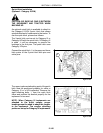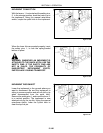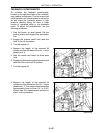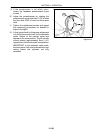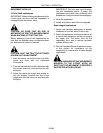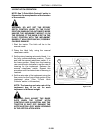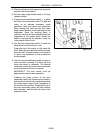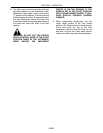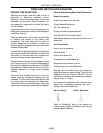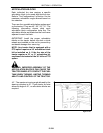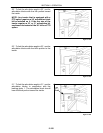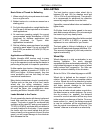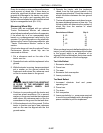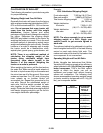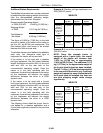
SECTION 2 - OPERATION
2-153
TIRES AND ARTICULATION BLOCKS
PROPER TIRE SELECTION
Selecting the proper size and type of tires is
important in achieving maximum tractor
efficiency. Various sizes and types of tires are
available for your tractor. Refer to Section 1 of
this manual for approved tire sizes by tractor
model number.
If a specific size of tire or tire configuration is not
listed under a particular model, do not attempt to
install that size tire.
The tires selected for your tractor must be able
to support the weight of the tractor and
equipment. The tires must also be able to
provide adequate tire traction to utilize the
tractor engine horsepower and turn it into useful
drawbar horsepower.
You will have to adjust the ballast, tire pressure
and tractor weight split between the front and
rear axles for various loads and conditions to
achieve the best ride and performance.
Always maintain the proper air pressure in the
tire to carry the load. Do not over inflate radial or
bias ply tires. Radial tires will work with LOWER
air pressures. Radial tires will show up to 20%
sidewall deflection or bulge when properly
inflated.
The force that enables the tires to drive the
tractor must be transmitted through the tire
sidewalls. The tires work best when all the tires
on a given axle are working at the same rate.
Think of them like a shock absorber; they must
respond the same way to share the load equally.
Factors Determining Best Tire Performance
Good Performance
Proper air pressure for the load
Proper sidewall deflection
8%-15% wheel slip
Proper tire size for expected load
Less than 50% fill of liquid ballast
Maintaining equal tire pressure in all tires on a
given axle
Poor Performance
High or low air pressure
Stiff sidewalls
High or low wheel slip
Overloaded or underloaded tire
Excessive liquid calcium in a tire
Treating tires on an axle differently
Bias ply tires are rated using a ply rating and
radial-type tires are rated using a * rating on the
sidewall of the tire. Refer to Section 5 of this
manual for information on loadcarrying capacity
based on ply or * rating.
As a general comparison, the following chart
details the relationship between ply and *
ratings of bias and radial tires.
Bias Ply R ating Radial * Equivalent
6 *
8 *
10 **
12 ***
Refer to “Ballasting” later in this section for
proper tractor weight procedures once the tire
size has been selected.



